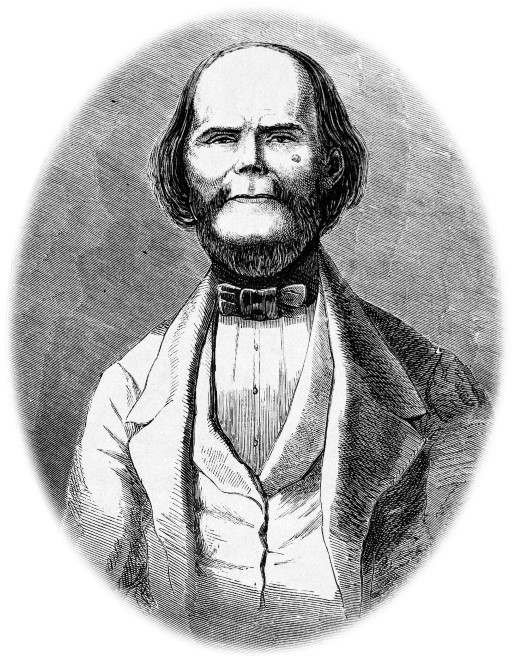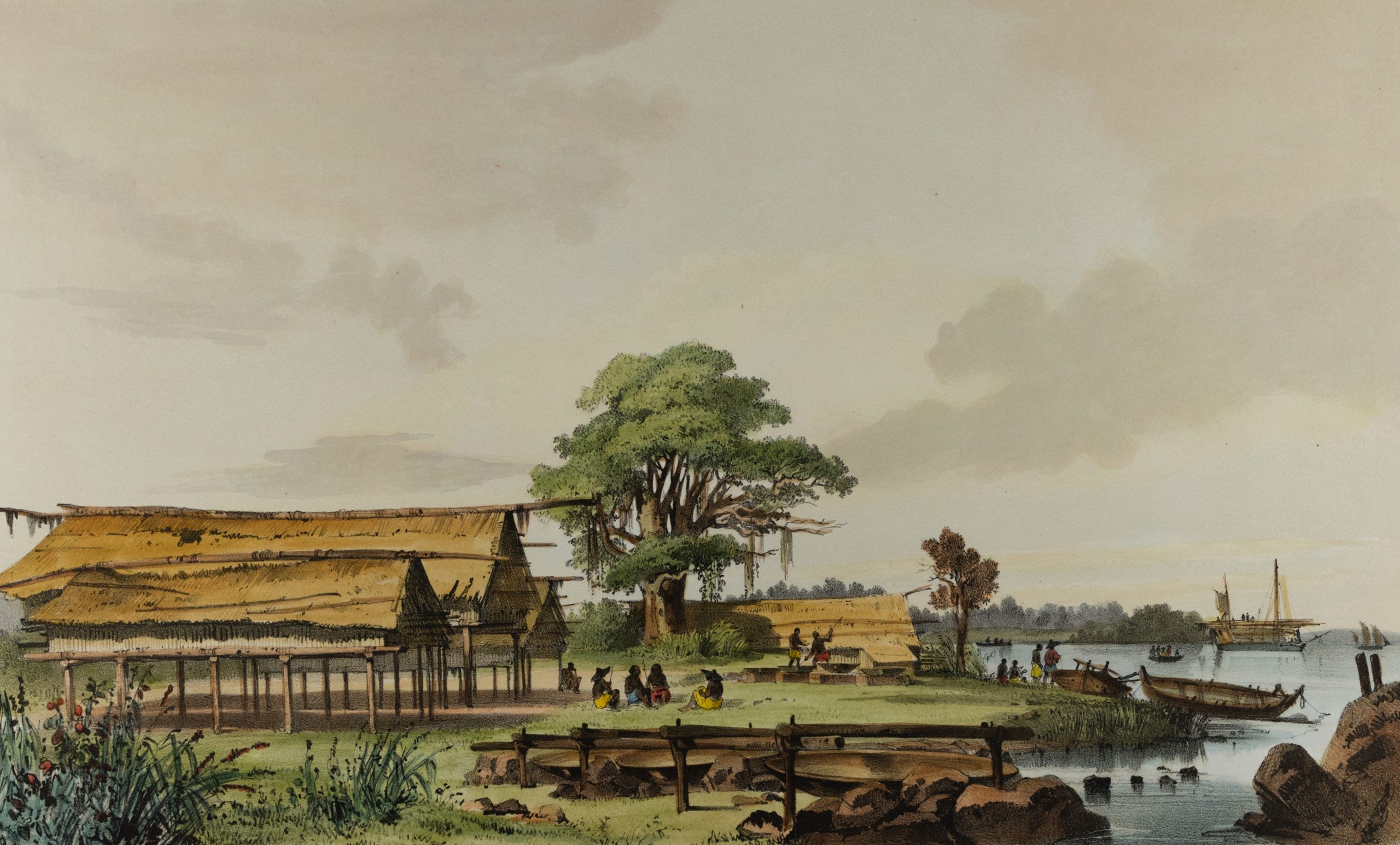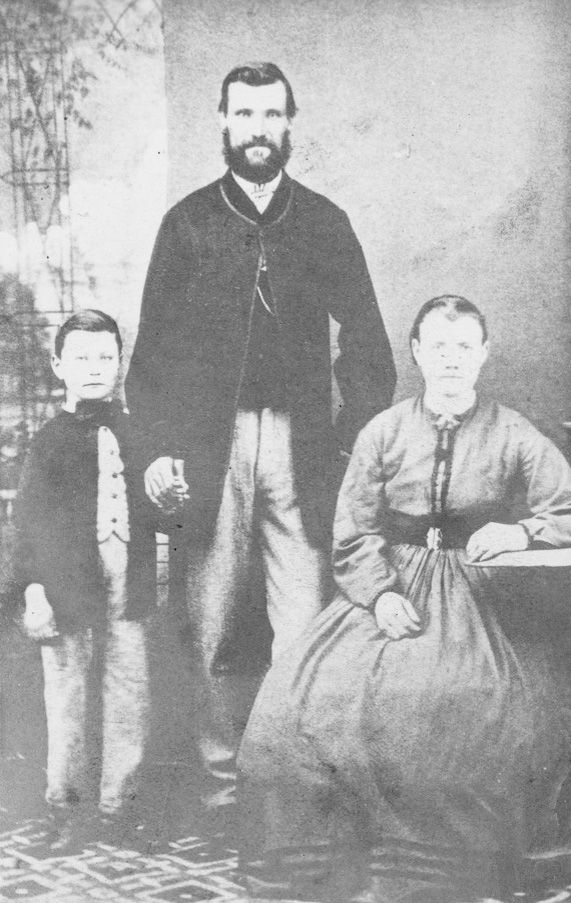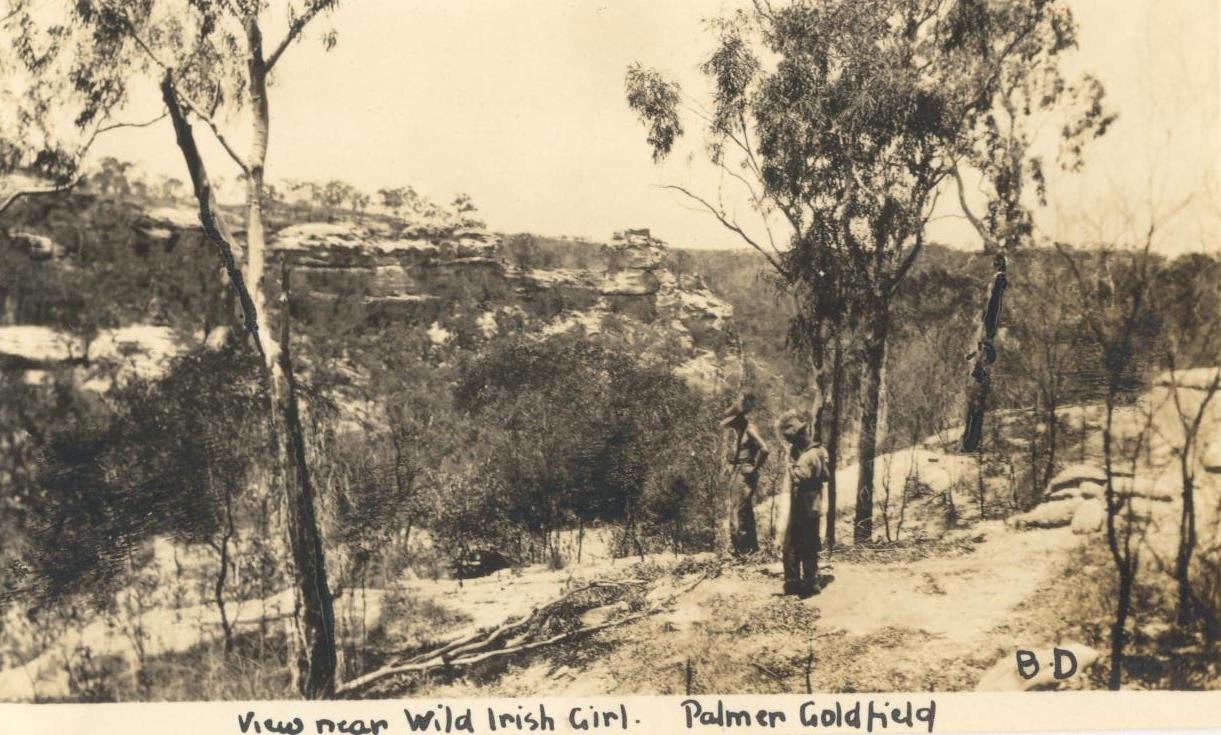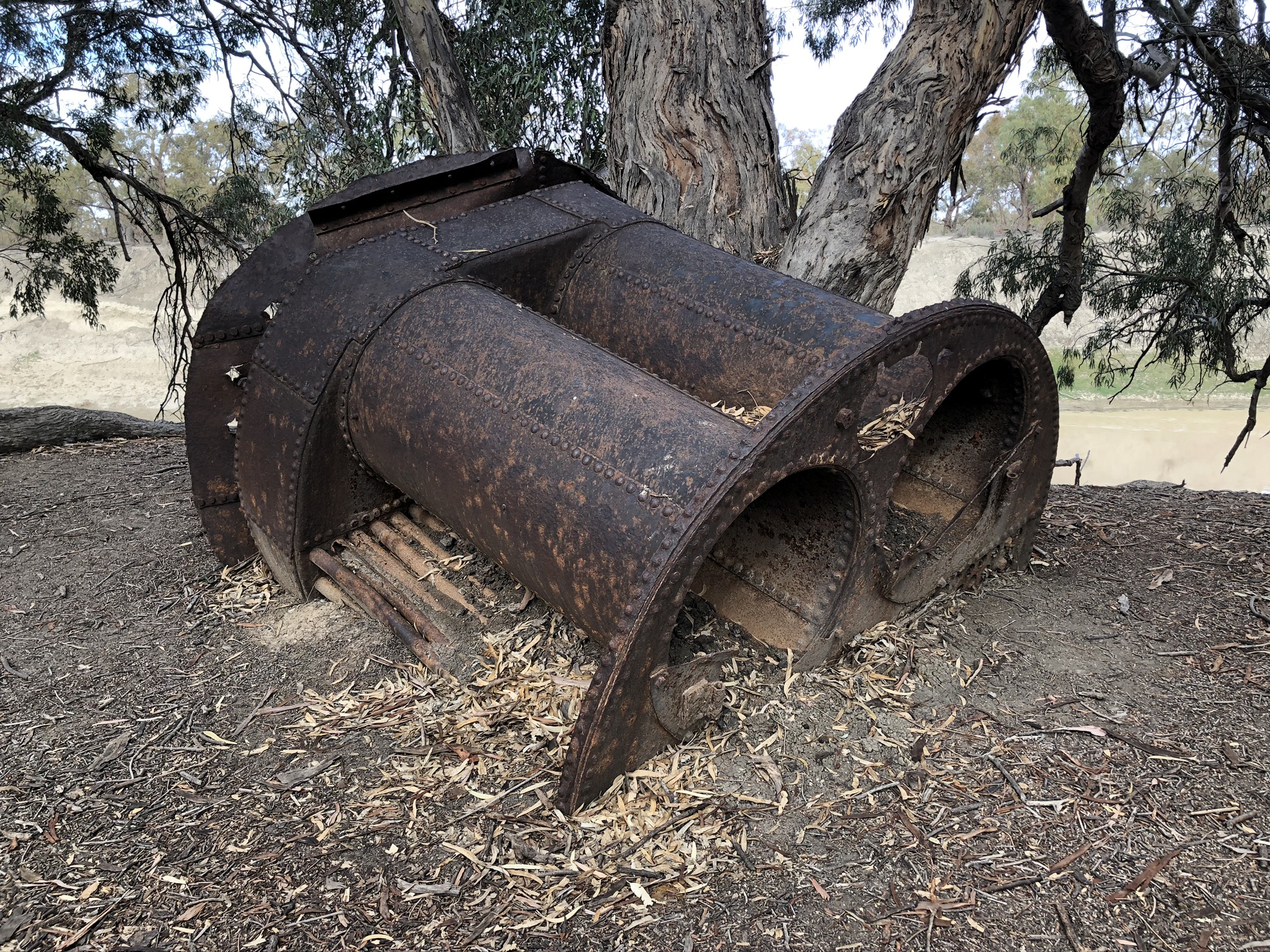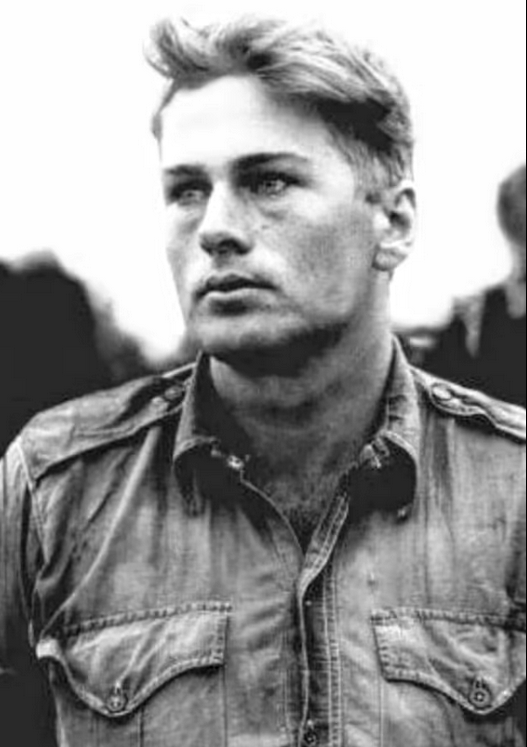In the late 1860s pastoralist and adventurer John Costello rode west from his holdings on Kyabra Creek, exploring the Channel Country out to the Diamantina. One night he camped beside a small creek, where he stripped back the bark of a bauhinia tree and carved his initials, JC. That tree…
-
-
It was April the 2nd 1902 when Queensland policeman, Constable Doyle, closed in on Patrick and James Kenniff at a rugged mountain hideout called Lethbridge’s Pocket. With the manager of Carnarvon Station, Albert Dahlke, and a tracker called Sam Johnson for company, Doyle stealthily approached the camp. Wanted for horse…
-
The ruins of a stone cottage, once the home of pioneer Mary Watson, lie crumbling up behind the beach at Watson’s Bay on Lizard Island, three hundred kilometres north of Cairns. Mary was born in Cornwall, and her family settled in Maryborough, Queensland, when she was seventeen. Both educated and…
-
Nemarluk was a fighting man of the Daly River people who would not be tamed. Born in 1911, by the 1930s he and a small band of young men were waging an effective guerrilla war against interlopers on his territory. The Fitzmaurice and Daly River areas had never been fully…
-
“It’s twenty years ago now since we settled on the Creek. Twenty years! I remember well the day we came from Stanthorpe, on Jerome’s dray – eight of us, and all the things – beds, tubs, a bucket, the two cedar chairs with the pine bottoms and backs that Dad…
-
John, Michael and Patrick McGree were raised on their parents’ farm on the Mid-north coast of NSW. All three answered the call to arms in 1915. The ANZAC battalions were forming up, and the brothers were determined to have their chance at glory. Their mother, Bridget Sullivan, had married Irishman…
-
Queensland has produced a character or two over the years, but John Decey “Galloping” Jones takes some beating. Apart from being one of the most talented rough riders of his generation, and one hell of a bare-knuckle fighter, he was famously light-fingered. Galloping Jones got his nickname from a horse…
-
More than a century ago, when the town of Eulo was a thriving centre on the Western Queensland opal fields, one of Australia’s most interesting women set out to make her mark. She was a short but striking redhead, spoke English, French and German, wore tight-fitting dresses over a voluptuous…
-
When Irishman, Lieutenant Charles Henry Buchanan and his wife, Annie, emigrated to Australia and took up a New England station called Rimbanda, they had no idea that their son Nathaniel would one day become known as the greatest drover the world has ever seen. Nat grew from a cheerful and…
-
Catherine Cecilia Coleman wasn’t famous, but was typical of a generation of Australian settlers. She was born in Maitland, NSW in 1856, eldest of ten children. She married in 1871, at the age of 15, and had the first of her own children a couple of years later. Her husband,…
-
Gundagai Flood 1900: National Library of Australia Australia’s worst flood drowned one third of the population of Gundagai in 1852. The town was originally built on low-lying areas around a natural river crossing and Morley’s Creek. The inhabitants were used to being cut off by floodwaters, taking refuge in their…
-
Things were tough in the NSW North Coast forests in 1907. All the cedar had been cut years earlier, prices for hardwoods had slumped, and the best way to make money was by shaping girders and sleepers. Tamban Forest woodcutter Bob Cooper was lucky enough to snag an order for a huge…
-
Image from the journals of James Grant It’s hard to think of a born and bred Australian who inspired more place names than Bennelong, or Beneelon, of Sydney. His name lives on at Bennelong Point, where the Opera House now stands; the electorate of Bennelong; and Bennelong Park at Kissing…
-
Paddy Cahill: State Library of South Australia Originally from the Darling Downs, Paddy Cahill made his name in the Northern Territory as a bushman, stockman and buffalo hunter. Paddy and his two brothers, Tom and Matt, all cut their teeth with the famous Nat Buchanan on one of Australia’s biggest…
-
Following on from last week’s post about Kate Kelly, spare a thought for the Jones family, who owned the Glenrowan Hotel when the Kelly Gang decided to use it as the venue for a battle with police. Ann Jones was the owner and publican. In the battle her pride and joy…
-
It was Saturday, November 15, 1879, and the McDonald family, at Wantabadgery Station, half way between Wagga Wagga and Gundagai, were settling down for the evening. A shepherd galloped in from further down the Murrumbidgee with the news. “I seen a gang of horsemen coming up along the river,” he…
-
In 1880, Australia’s borders were open, with no quarantine restrictions, and few immigration controls. Chinese miners had been flooding into the Territory goldfields for years. The Margaret River goldfields, north of Pine Creek, were worked by two rival Chinese factions, one from Hong Kong and the other, Macao. When they…
-
James Martin was working as a boundary rider when he first got his hands on a copy of Karl Marx’s Communist Manifesto. He was thunderstruck by the possibilities. He carried the book everywhere while he absorbed every word. He then moved on to other socialist writers such as Bellamy and…
-
The year was 1882, and the sheets were wet with blood and sweat as the young woman fought to deliver her third child. The baby was born sickly and weak. Even worse, the midwife could not stop the new mother from bleeding. It was soon obvious that she was dying.…
-
It was May 1885, and twelve-year-old Clara Crosby was boarding with a local family at Yellingbo, Victoria, when she decided to visit her mother, who lived some two kilometres away. Setting off across paddocks and bushland, Clara was seen by several locals, including the publican, as she left town. She…
-
There have always been two schools of thought on the Australian bush: epitomised in the romantic writings of Banjo Patterson, and the harder, more brutal outback of Henry Lawson. The poet who presented the bush in the harshest light of all was stockman and poet Barcroft Boake. That doesn’t, of…
-
Some men are born bad, some become outlaws through persecution and desperation. Some, like Harry Readford, are opportunists, who commit their crimes through a sense of fun and love of a challenge. Even as a young man, Harry was an unusually tall and impressive figure, face shaded by his hat…
-
Riding like the born horseman he was, across South Australia, through Victoria and into New South Wales, Harry decided that the best way to throw the police off was to lose himself in some nondescript country town. He was smart enough not to ride openly into his birth place of…
-
The story of Harry Readford has more twists and turns than an outback trail. The police nabbed him on the road to Sydney, and he was handed, with great fanfare, over to the Queensland authorities. But by then Harry was a folk hero. Every Australian loved the story of a…
-
Tom Turner was just nineteen years old when he quit his trade as an iron and wire worker, and joined the South Australian Police Force. Posted to the mining town of Kapunda in 1907, a local girl soon caught his eye. Her name was Pauline Alma Rohde. Tom started courting…
-
Long before Charlie Gaunt rode the plains of Western Queensland and the Gulf Track across to the Kimberleys with the Duracks, his mother was a passenger on an immigrant ship, plying the seas from England to a new life in Australia. The family sailed on the Royal Mail Steamship Africa,…
-
This is the Parapitcheri waterhole, on the Georgina River west of Boulia. Charlie and the rest of the Durack party camped here with 7000 head of cattle for at least three months, waiting for rain to bring the drought-parched plains back to life so they could continue. It was a…
-
If you ever find yourself in Roper Bar, Northern Territory, drive down the caravan park, climb over the fence at the far end and walk into the bush a hundred metres or so. There you’ll find the grave of John Urquhart. I took this photo in July, when I was…
-
John, Michael and Patrick McGree were raised on their parents’ farm on the Mid-north coast of NSW. All three answered the call to arms in 1915. The ANZAC battalions were forming up, and the brothers were determined to have their chance at glory. Their mother, Bridget Sullivan, had married Irishman…
-
Continuing on the series of background articles to Whistler’s Bones, this one covers the arrival of Charlie’s father in Australia, the meeting of his parents, and Charlie’s early years. This is a long post, but if you’ve read Whistler’s Bones, or intend to, it will give you some extra background.…
-
As an old man Charlie Gaunt wrote in the Northern Standard Newspaper (May 29 1934): “The head of (Edward) Lenehan we wrapped in a saddlecloth and carried into Broadmere. At the foot of one of those giant paper bark trees it now rests and with the help of a carpenter’s…
-
In 1889 Charlie Gaunt was working on Lake Nash Station, near the NT/Queensland border first breaking horses and then as a stockman. Lake Nash Station was, at the time Charlie arrived there, under the ownership of John Costello. John’s pride and joy, Valley of Springs Station had, by this stage,…
-
I’m curious whether anyone who read this story when it was originally posted, and who has also read Whistler’s Bones, noticed the reference on page 75 to Catherine Coleman. Charlie Gaunt and Catherine must surely have met when the Durack droving teams passed through Forest Grove in 1883. Catherine Cecilia…
-
Charlie Gaunt was in his late thirties, veteran of the Northern Territory cattle trails, and a hard-fought Boer War, when he began several decades of international wandering. His willingness to work as a seaman took him wherever he wanted to go. Since Whistler’s Bones is essentially a novel about Charlie’s…
-
“Bushranger” is a uniquely Australian term for the lawless characters who roamed the fringes of civilised districts seeking out easy money through robbery and violence. The word was first used in the Sydney Gazette in 1805, referring to a wild assortment of escaped convicts, deserters from the military and disillusioned…
-
“Captain” Joe Bradshaw was one of the most adventurous of the early Northern Australian pastoralists. He was born in Melbourne in 1855 with cattle and farming in his blood. His father owned several properties in Victoria, including Bolwarra and Bacchus Marsh Stations. An explorer by nature, by his early twenties,…
-
John Warrington Rogers was the eldest son of a politician and QC from Tasmania and Victoria. Young “Jack” as he was called, was sent “home” to England to attend an expensive private school, but he wanted no truck with balls and banquets. As soon as he returned to Australia, he…
-
One of the most touching stories from Charlie Gaunt’s later years came from a time when he’d left the Australian outback far behind and wandered the Western States of America as a hobo. This is one of many periods of his life there just wasn’t room for in the book.…
-
Not many people know that the youngest son of one of the great English novelists, Charles Dickens, lies at rest in the cemetery of an Australian outback town. Edward Dickens was encouraged by his father to migrate to Australia, where he took to farm and station life as if he…
-
A ship like this steaming up Gulf rivers would raise a few eyebrows these days, but in the early 1900s the Marion Sleigh was a regular sight carrying supplies as far up as the Roper River Bar, and Borroloola on the Macarthur. The Marion Sleigh was of 506 tons burden,…
-
Most Australians know the names of our biggest cattle kings, Sidney Kidman and John Cox. Charles Brown Fisher was in the same league, building an empire of land, men, cattle and sheep when things were much tougher. Charles was born in 1818, in London. Feeling restricted by city life, as…
-
One of the parts of Charlie Gaunt’s life that I would have liked to explore more in Whistler’s Bones, but it didn’t fit into the story, was his years skippering a pearl lugger out of Broome in the 1890s. Charlie was able to throw in with a partner, a local…
-
The year was 1917, and it had been a long day in the saddle for Walter and Thomas Darcy. They drew first turn at the night watch, keeping the cattle contained on the river flats, while the rest of the crew slept. A rider came in from Wyndham with terrible…
-
Tom Kilfoyle, a cousin of the pioneering Durack family, was Charlie Gaunt’s boss for much of the 1883-6 overland drive from the Channel Country in Queensland to Rosewood Station in the Kimberleys. Tom was born in County Clare, Ireland in 1842 but became a highly skilled bushman. Interestingly, he later…
-
September 1892. The game was cribbage for a stick of tobacco each hand. Four men whiling away a long night by the light of a slush lamp on Auvergne Station, near the NT/WA border. Even today, Auvergne is an isolated and dramatic locale; rugged mountains cut through by the Bullo,…
-
I was lucky enough to know one of the main players in this little story from Australia’s recent history. Everyone knew that one of our English teachers at high school had played rugby for the Wallabies. We’d also heard that he’d done something special. It wasn’t until later in life,…
-
The shearers’ strikes of the 1890s flared dangerously close to open warfare. It was a bitter struggle, with no sympathies between the conflicting sides. As one old timer recalled: The wonder is that the strike and its attendant disturbances did not end in civil war. Since the Eureka Stockade, Australia…
-
If you’ve read Whistler’s Bones you’ll know that Charlie Gaunt died at the Dunwich Benevolent Asylum on January 29, 1938 of myocarditis and a rodent ulcer. His was just one of ten or more thousand, mainly unmarked, graves that lie beneath the sands of North Stradbroke Island. The Dunwich Benevolent…
-
Women in the Victorian era were often sheltered and protected; dominated by strict male figures and lacking experience in the real world. Yet, not all women were like that. There were female outlaws, ship’s captains, drovers, and even the odd well-bred adventurer like Carrie Creagh, probably the first European female…
-
Back in the 1920s, mental illness was seen as shameful. Sufferers were locked away, and subjected to “treatments” based on barely tested theories. The story of Alma McGee is a case in point. Alma’s mother, Frances, came from a Protestant family – landed gentry in Cork, Ireland. Frances fell in…
-
There’s a long tradition of laughing at authority in Australia. Holding the constabulary up to ridicule was often the response to oppressive police tactics. Australian bushrangers loved nothing better than making fools of the “traps.” Some entered stolen racehorses in bush races and won, or even impersonated the police commanders…
-
William Buckley was an English bricklayer, and ex-soldier, transported to Australia in 1803 for being caught in possession of stolen goods. He was a huge man, standing six foot six in his socks. Resuming his trade at Port Phillip, he laid the first brick of the town that would eventually…
-
The extent of the Macassar penetration into Northern Australia was greater than is generally acknowledged: much more than a few scattered trepang-seeking proas. In fact, as this excerpt from Voyage to Terra Australia by Matthew Flinders, shows, Macassar incursions featured large numbers of boats and men; heavily armed and organised…
-
When boundary rider Charles Rasp stumbled on an interesting hill in far western NSW, with a fractured body of ore running right through it, he wasn’t sure if he’d found something of value or not. He consulted his battered copy of ‘The Prospector’s Guide’ to be certain. Within a few…
-
Mounted Constable Michael Donegan woke up in his cot at the Leichhardt’s Crossing Police Station, with a hangover so bad he’d been dreaming that he was back home in Derry, Ireland, where a huge shirtless man was hitting the side of his head with a ten-pound hammer. His sleeping mind…
-
Thomas Cuthbert Coolon was born in Richmond, New South Wales, on the tenth of April 1859. His mother, Sarah Douglass, died when he was seven years old. His father remarried and moved out west of the Darling River where Tom was abducted by a group of Aborigines. For the next…
-
By Greg Barron The Old Adelaide Gaol stands on the south bank of the River Torrens, massive and silent. The thick stone walls, guard towers and block-like cells leave visitors in no doubt that from 1841 to 1988, this was a prison designed to dehumanise and isolate its inhabitants; those…
-
by Greg Barron If you wanted to cook up a wild adventure story, start with a Queensland river blessed with rich alluvial gold. Throw in a bunch of self-reliant prospectors, an uncontrolled stream of Chinese diggers, Martini-Henry rifles, spirited horses, and a tough indigenous nation that resented and fought the…
-
( Twin fireboxes, once attached to the Providence’s boiler, still lie on the banks of the Darling near Kinchega Station. ) The year was 1872, and for twelve months the 78-foot-long wooden paddle steamer Providence, under the leadership of Captain John Davis, sat on a waterhole north of Menindee waiting…
-
When Irishman, Lieutenant Charles Henry Buchanan and his wife, Annie, emigrated to Australia and took up a New England station called Rimbanda, they had no idea that their son Nathaniel would one day become known as the greatest drover the world has ever seen. Nat grew from a cheerful and…
-
Part legend, part fact, their adventures embellished and exaggerated around a thousand campfires, the story of the Ragged Thirteen has been beloved of bush story tellers for a hundred and thirty years. The Ragged Thirteen were brilliant horsemen, fugitives, consummate bushmen, lovers of bush poetry and champions of the underdog.…
-
‘Way out back in the Never Never Land of Australia there lives a patriotic breed of humans who know little of the comforts of civilized life, whose homes are bare, where coin is rarely seen, but who have as red blood and as clean minds as any race on earth.…
-
Of all the men who were compelled, by Government decree, to carry a rifle for Australia against the Japanese when they advanced down through the Pacific in World War Two, one man stands out. They said that conscripts couldn’t fight. They said that conscripts weren’t brave. They called them…
